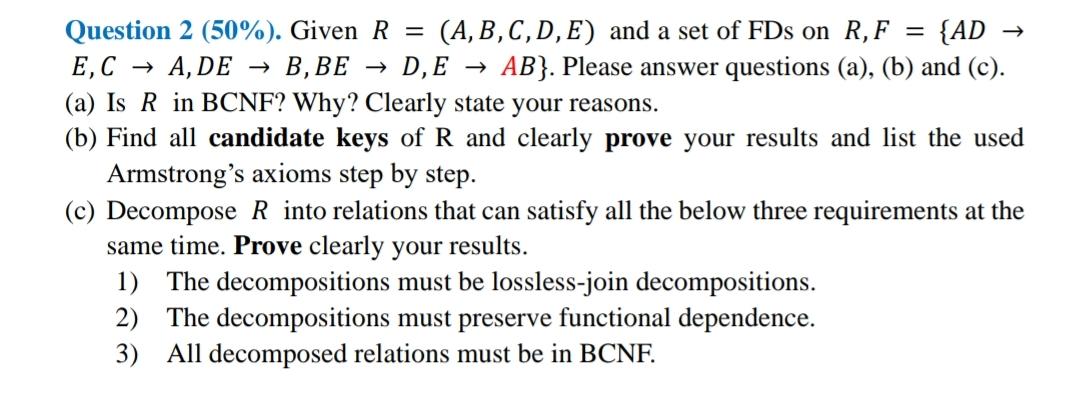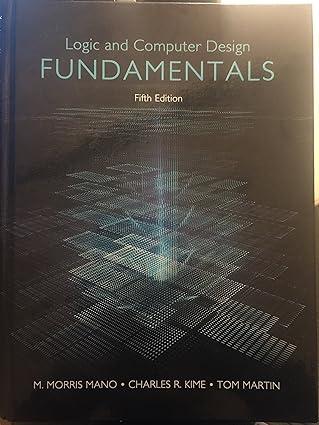Question
Question 2 (50%). Given R (A, B, C, D, E) and a set of FDs on R, F = {AD E, C A, DEB,

Question 2 (50%). Given R (A, B, C, D, E) and a set of FDs on R, F = {AD E, C A, DEB, BE D,E AB}. Please answer questions (a), (b) and (c). (a) Is R in BCNF? Why? Clearly state your reasons. (b) Find all candidate keys of R and clearly prove your results and list the used Armstrong's axioms step by step. (c) Decompose R into relations that can satisfy all the below three requirements at the same time. Prove clearly your results. 1) The decompositions must be lossless-join decompositions. = 2) The decompositions must preserve functional dependence. 3) All decomposed relations must be in BCNF.
Step by Step Solution
There are 3 Steps involved in it
Step: 1

Get Instant Access to Expert-Tailored Solutions
See step-by-step solutions with expert insights and AI powered tools for academic success
Step: 2

Step: 3

Ace Your Homework with AI
Get the answers you need in no time with our AI-driven, step-by-step assistance
Get StartedRecommended Textbook for
Logic And Computer Design Fundamentals
Authors: M. Morris Mano, Charles Kime, Tom Martin
5th Edition
0133760634, 978-0133760637
Students also viewed these Databases questions
Question
Answered: 1 week ago
Question
Answered: 1 week ago
Question
Answered: 1 week ago
Question
Answered: 1 week ago
Question
Answered: 1 week ago
Question
Answered: 1 week ago
Question
Answered: 1 week ago
Question
Answered: 1 week ago
Question
Answered: 1 week ago
Question
Answered: 1 week ago
Question
Answered: 1 week ago
Question
Answered: 1 week ago
Question
Answered: 1 week ago
Question
Answered: 1 week ago
Question
Answered: 1 week ago
Question
Answered: 1 week ago
Question
Answered: 1 week ago
Question
Answered: 1 week ago
Question
Answered: 1 week ago
Question
Answered: 1 week ago
Question
Answered: 1 week ago
Question
Answered: 1 week ago
View Answer in SolutionInn App



